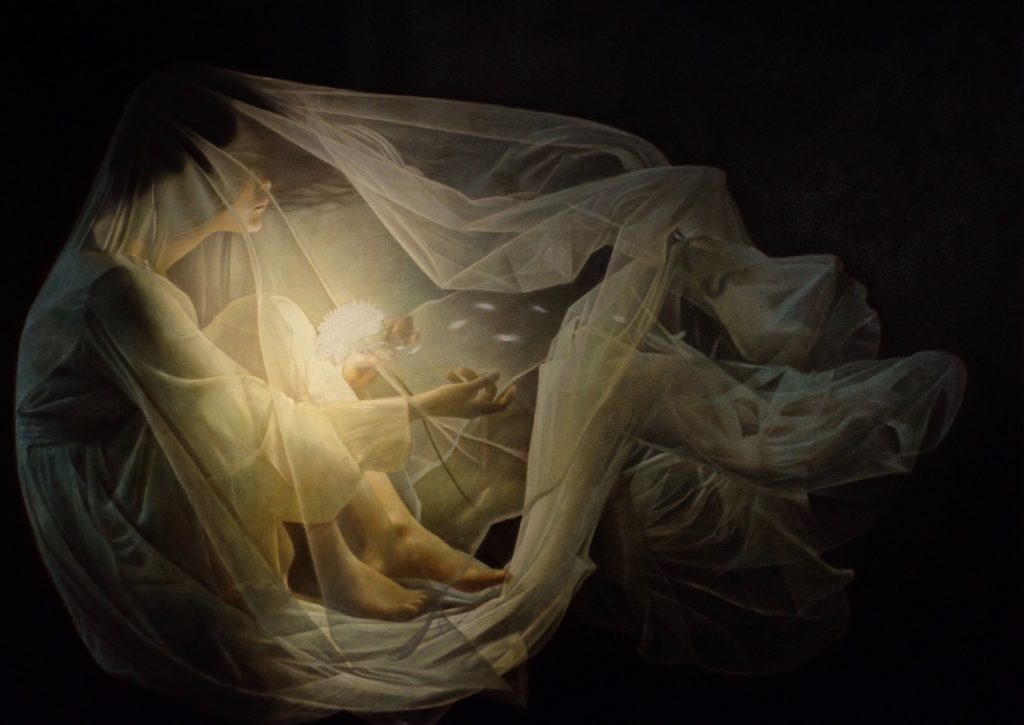EPITOME OF INCARNATION
Mark Maac, Isko Andrade & Marvin Quizon
January 21 - February 1, 2018

Epitome of Incarnation
The divine made flesh—this has been an age-long belief bridging some of the world’s major religions. From Hinduism to Christianity, the concept of incarnation has been the bedrock of dogmas and the core conviction of faithful ones transcending generations and continents. People have always trusted this need for a god taking an earthly form for the salvation of humankind. Just as ageless is the belief in re-incarnation, or the cyclical process of a soul being re- born into a bodily creature. Outside religion, incarnation has been used evoke the embodiment of an abstract concept.
“Epitome of Incarnation” stems from these varying notions of incarnation, but in essence brings a renewed, valuable perspective to the word. Through their melancholic paintings, Isko Andrade, Mark Maac, and Marvin Quizon have incarnated their own personal thoughts, dreams, memories, or feelings—things that would’ve otherwise remained in their minds if not for their art-making. Andrade executes what appears to be a delicate, young girl’s dress peppered with roses and petals. The soft, dainty embroidery at the top of the clothing subtly contrasts a starkness of dark and light seen in the thick, opaque folds at the bottom of the dress, achieving a dramatic, chiaroscuro effect. Maac’s We will Never be the Same Again reveals a lady enveloped in a translucent white cloth. Only traces of her nose and lips can be seen, rendering her almost unrecognizable. The ghostly figure is seen floating in a deep shade of red, as if existing only in a faraway, void space. Quizon is consistent in presenting an image of a paled, faded lady holding a bouquet of flowers. Whether appearing in the midst of burnt paper or bounded at the head and hands, she holds a haunting presence.
Though clearly unique from one another, all three artists explore similar subjects and moods. The female, the flower, the folding of delicate cloth— these themes are recurring and illuminated. Fittingly, they reference to birth, re- birth, and a new life—pointing back to notions of incarnation and re-incarnation. The color red serves as a powerful force amidst the bleak backgrounds and muted figures. Just like the flowers representing new beginnings amidst the deceased, the red signifies a pulse of energy, vitality, and life.
Not unlike the deities of major religions and the laypeople that continue to worship them, Andrade, Maac, and Quizon have recognized a necessity in turning the intangible into the physical, bringing into the corporeal world these invisible concepts that tug at our minds and spirits. By using incarnation as the focal point of their exhibit, they open up the idea of the artistic process as a vehicle for a transcendental experience. Furthermore, they position artists as creators, capable of breathing life into a limitless flow of deeply personal yet universal ideas, experiences, and emotions.
—Nicole Soriano